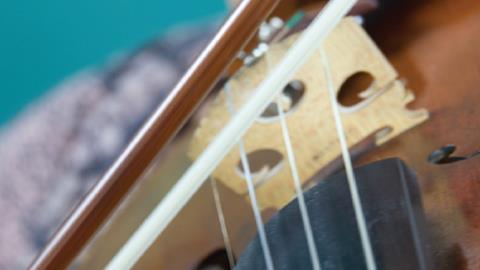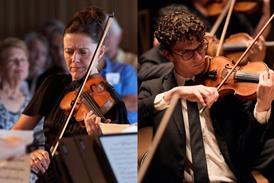Tips for even and seamless string crossing from The Strad’s archive

Explore more Featured Stories like this in The Strad Playing Hub
One of the secrets of a smooth bow arm, and of seamless, legato string-crossings, is to bow between the levels of the four strings. A good way to make string-crossings rounded is to practise them as double-stops or to leave out the left hand and just play the bowing pattern on open strings.
Simon Fischer, The Strad, December 2009
The whole arm from the shoulder should be used, and not the wrist, except in certain exceptional cases. A flapping wrist is no help in crossing strings, but will cause irregularity in tone and time. A supple wrist need not move to prove its suppleness, as some enthusiastic players seem to think. The sound will tell everything and must be the chief consideration.
Joy Calvert, The Strad, September 1948
For continual change of two strings, choose that elevation of the elbow which would suit the stroke on both strings together, so that the hair will lie full on the farther (thicker) string, but with its edge only on the nearer (thinner) one. Should you choose the elevation according to any one string among the two, you would either roll the bow over backwards on the far string, or overdo the bend of the hand on the nearer one.
Carl Courvoisier, The Strad, September 1893
When moving from G to C string on the cello, the wrist movement required for this purpose is greater than on the other strings. But it must be remembered that the wrist must never sink below the level with the forearm; nor should the movements of the wrist be sudden or self-intentional.
E. Van Der Straeten, The Strad, November 1895
To cross smoothly from one string to another, the bow has to start moving towards the new string while it is still playing the old string. This is a good example of technical timing as opposed to musical timing. Musical timing is when you want the note to sound; technical timing is always before the sound. If the string crossing movement is made too late, so that the technical timing is almost the same as the musical timing, fast passages may feel unnecessarily awkward; slow, legato passages may contain unwanted accents. You can easily improve string crossing passages by deliberately crossing too early. Play the note before the string crossing and the note after it as a double stop.
Simon Fischer, The Strad, January 1997
In crossing strings the wrist will be raised in crossing from a higher (or front) to a lower (or back) string and reversely dip or bend downwards when crossing from a lower to a higher string, and this whether up or down bow.
John Dunn, The Strad, March 1897
Read: ‘Free and ringing, never forced’ - Technique: Developing bow control for improved tone
Read: Technique: Smooth string-crossings
Discover more Featured Stories like this in The Strad Playing Hub
Reference
Technique: New perspectives on bow curves for double bass

How to improve fluidity, nuance and expression in every bow stroke
- 1
- 2
- 3
 Currently
reading
Currently
reading
6 ways to improve your string crossing
- 5
- 6






















































No comments yet